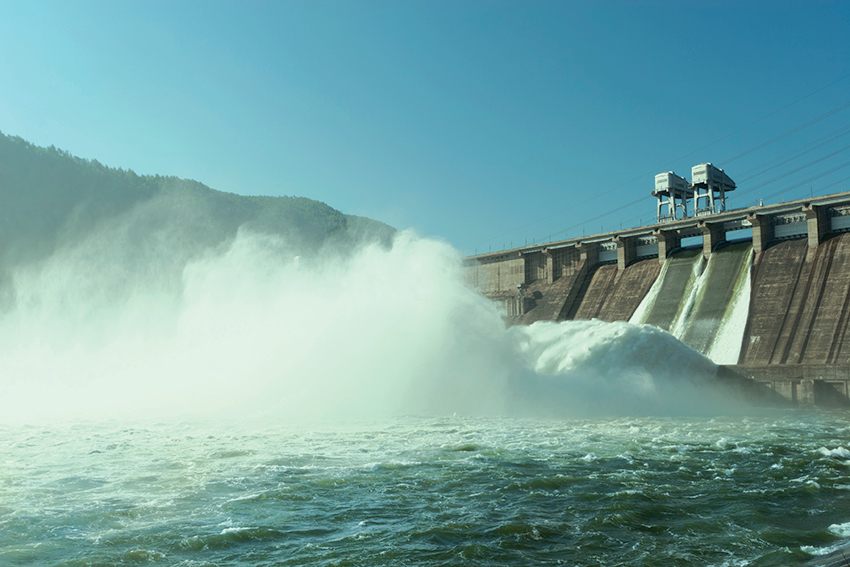Energy plays a major role in transforming the economy. In recent years many African countries have faced energy crises, yet are increasingly able to deal with them in an environmentally and economically sound fashion.

More than a century after the light bulb was invented most of the African continent is still in the dark after nightfall. School children often cannot read after dusk, businesses cannot grow, and clinics cannot refrigerate medicine or vaccines, while industries lay idle, hampering economic growth, jobs and livelihoods. Today some 25 countries in sub-Saharan Africa are facing a crisis manifested by rolling blackouts. Although the African continent is well endowed both with fossil fuels and renewable resources, these are not evenly distributed, creating windfall profits for some countries and exacerbating energy shortages in others.
Since the mid-1990s, external finance to Africa’s power sector has averaged only around $600 million per year of public assistance, plus a similar volume of private finance. More recently, Chinese, Indian and Arab sources have also emerged as significant energy financiers. It is estimated that doubling current levels of energy access by the year 2030 will require sustained investment at high levels, and many African nations are relishing the opportunity.
The World Bank has identified both short- and long-term goals towards achieving this aim. In the short-term, the challenge is to stabilize power systems across the continent through interventions that reduce the demand for power and enhance system reliability in a cost-effective manner. In this regard, the Bank has recommended improved energy efficiency through the use of Compact Fluorescent Bulbs, which can rapidly reduce consumption. Demand-side management techniques, such as tariff adjustments that incentivize consumers to reduce power demand at peak times, also have an important role to play.
In the longer-term, the African power sector faces several strategic shortcomings. The responses supported by the World Bank are expected to lead to more power being produced and distributed in a commercially viable fashion, while simultaneously ensuring that the benefits of energy access are shared more broadly. A sustained increase in external investment will be a critical enabler. Significant progress has been made in the formation of regional power pools and power trading is already taking place in western and southern Africa. Power pool architecture in other regions is less well-developed, and in all regions investments in regional interconnections and new generation facilities are needed before the benefits of trade can be fully realized.
Senegal is a beacon of being able to both cater to the increasing needs of energy domestically, while reducing reliance on harmful energy sources. In Senegal, two pillars have been identified in the energy sector that seek to restructure the economy; the Universal Access to Energy and the Electric Sector Recovery plans. The strategy of both revolves around the integration of new energy sources for cheaper production of electricity; the promotion of renewable energies in order to attain the 20% objective of installed capacity by 2017; energy efficiency; the acceleration of the current rural electrification rate, passing from 30% in 2014 to 60% in 2017; and the provision of alternative cooking fuels. Senegal is planning the construction of new environmentally sound power plants to slash fossil fuel consumption to 45% from 91% by 2017, further illustrating the country’s commitment to environmental concerns.
The population’s access to electricity, particularly in rural areas, is a top priority for the government of Senegal in order to establish a balanced economic and social development. In the context of the Universal Energy Service brought by the Plan Sénégal Emergent (PSE), the government is committed to achieving an intermediate target of rural electrification of 60% by 2017, with at least 30% per department. This objective has three parts: first, the implementation of the six rural electrification concessions already allocated; second, the implementation of the Local Initiative for Rural Electrification, and finally the National Emergency Program for Rural Electrification.
Equatorial Guinea is another example of how African states are both dealing with increased energy demands and benefiting from the economic potential that an expanded energy sector can offer. “Energy has been the engine that has driven economic growth,” says Gabriel Mbaga Obiang Lima, Minister of Mines, Industry and Energy, and the ministry is working hard to continue to sustainably explore the country’s vast oil resources.
The government has declared that the process of providing reliable national access to electricity is one of Horizon 2020’s principal strategies. In December 2014, the ministry signed an agreement with Taleveras, one of the leading suppliers of crude oil and refined petroleum products in West Africa, to construct Africa’s largest oil storage terminal at Punta Europa on the island of Bioko, which will be ideally situated to serve West Africa’s main oil supply and demand centers. To be developed in stages, the Bioko Oil Terminal is expected to have a total storage capacity of 1.2 million cubic meters for refined products and crude oil by the end of its first two phases.
Investment opportunities also exist with domestic energy companies. SEGESA Holding (SH) , the national electricity company based in Malabo, occupies a central role in Horizon 2020. At any given time, the company may be developing 20 or more electrical energy projects in the areas of production, transport, distribution, and commercialization. Estimates for the amount of money invested into these projects hover around $2b, but the likely return on that investment cannot be calculated: the country can now meet its increasing demand for power, and in fact is capable of producing more electricity than it consumes -- a situation that it is working hard to cultivate and perpetuate.
The African energy market offers a plethora of energy sources, each of which is its own investment opportunity. Given the way that Senegal and Guinea have dealt with their respective problems, the future looks bright for energy ventures on the continent.
0 COMMENTS